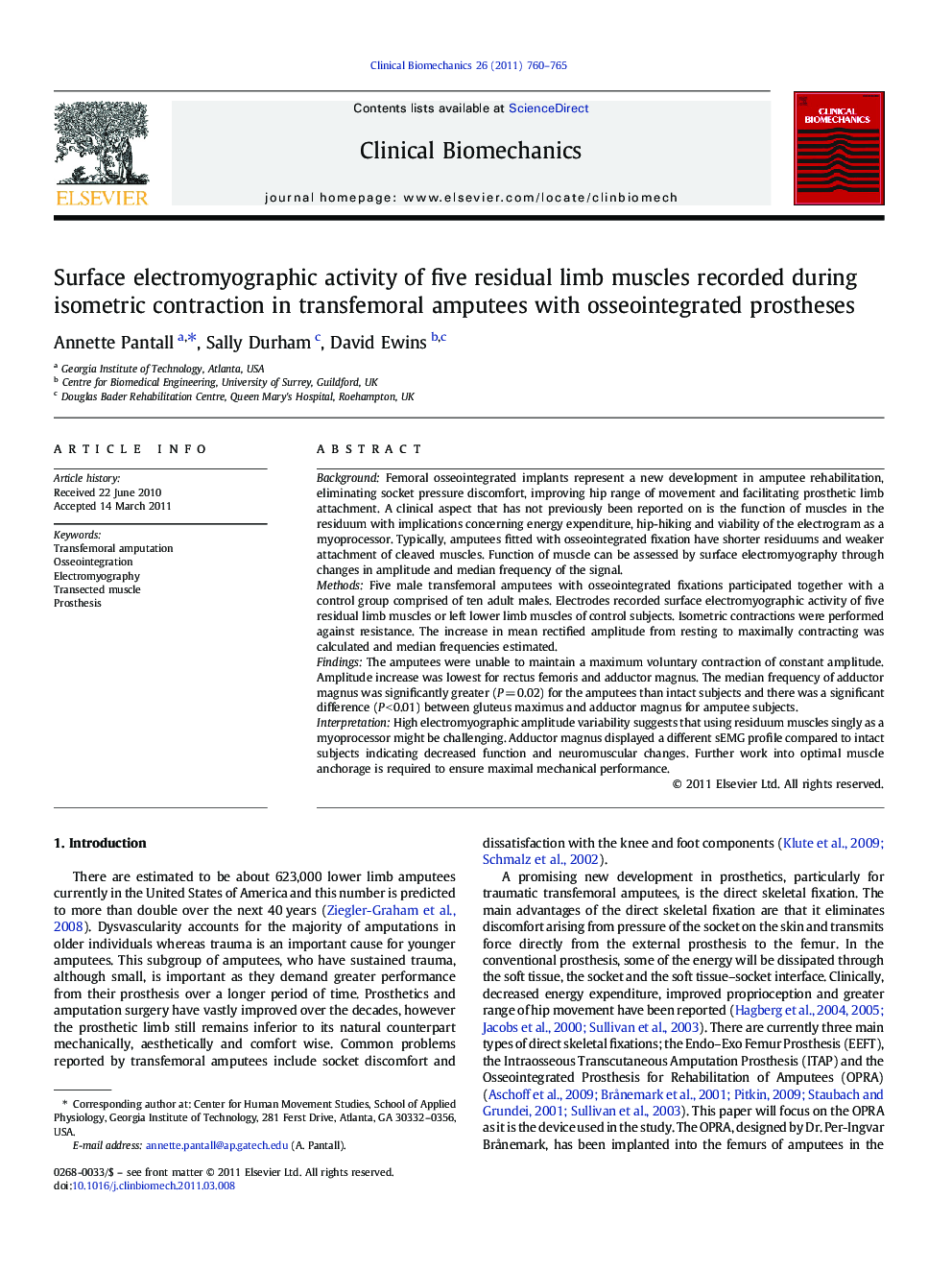| کد مقاله | کد نشریه | سال انتشار | مقاله انگلیسی | نسخه تمام متن |
|---|---|---|---|---|
| 4050725 | 1264954 | 2011 | 6 صفحه PDF | دانلود رایگان |

BackgroundFemoral osseointegrated implants represent a new development in amputee rehabilitation, eliminating socket pressure discomfort, improving hip range of movement and facilitating prosthetic limb attachment. A clinical aspect that has not previously been reported on is the function of muscles in the residuum with implications concerning energy expenditure, hip-hiking and viability of the electrogram as a myoprocessor. Typically, amputees fitted with osseointegrated fixation have shorter residuums and weaker attachment of cleaved muscles. Function of muscle can be assessed by surface electromyography through changes in amplitude and median frequency of the signal.MethodsFive male transfemoral amputees with osseointegrated fixations participated together with a control group comprised of ten adult males. Electrodes recorded surface electromyographic activity of five residual limb muscles or left lower limb muscles of control subjects. Isometric contractions were performed against resistance. The increase in mean rectified amplitude from resting to maximally contracting was calculated and median frequencies estimated.FindingsThe amputees were unable to maintain a maximum voluntary contraction of constant amplitude. Amplitude increase was lowest for rectus femoris and adductor magnus. The median frequency of adductor magnus was significantly greater (P = 0.02) for the amputees than intact subjects and there was a significant difference (P < 0.01) between gluteus maximus and adductor magnus for amputee subjects.InterpretationHigh electromyographic amplitude variability suggests that using residuum muscles singly as a myoprocessor might be challenging. Adductor magnus displayed a different sEMG profile compared to intact subjects indicating decreased function and neuromuscular changes. Further work into optimal muscle anchorage is required to ensure maximal mechanical performance.
Journal: Clinical Biomechanics - Volume 26, Issue 7, August 2011, Pages 760–765